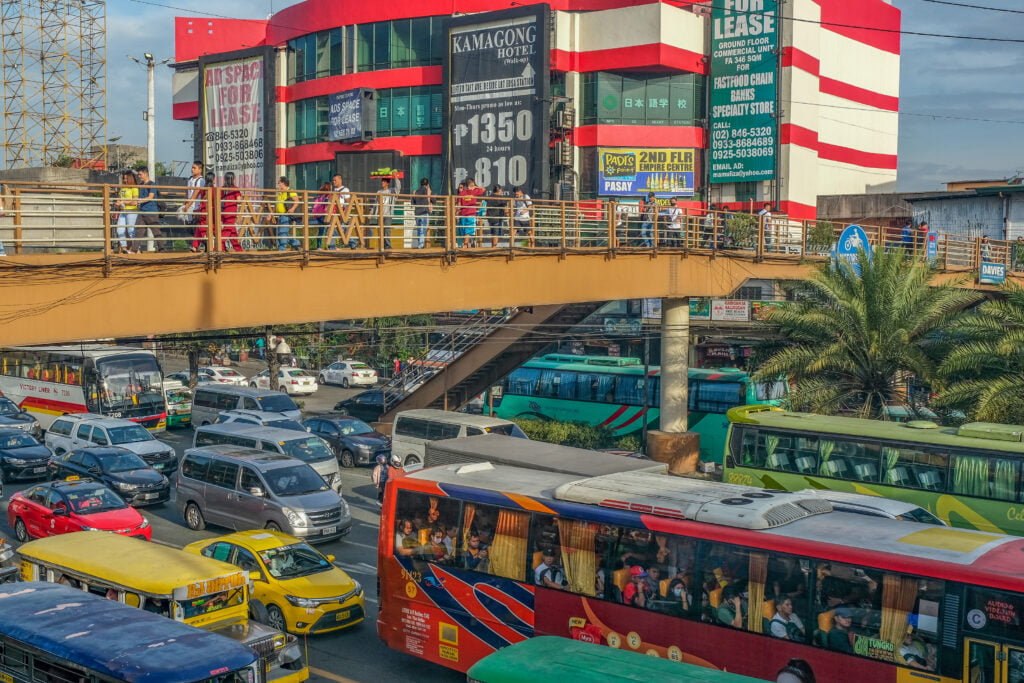Transit Advertising Philippines: Get To Hundreds Of Travelers Daily
Transit Advertising Philippines: Get To Hundreds Of Travelers Daily
Blog Article
Exactly How Transportation Advertising Can Change Public Transportation Spaces Into Dynamic Advertising And Marketing Platforms
Transportation advertising holds significant potential to redefine public transportation areas into dynamic marketing systems that involve and notify. As we discover the multifaceted benefits and developing techniques of transit advertising, it raises the question of how this change might redefine our interactions with both brands and the urban environment.
Advantages of Transportation Advertising And Marketing

Furthermore, transit advertising and marketing is highly cost-effective contrasted to traditional media. It permits advertisers to accomplish high perceptions at lower prices, taking full advantage of roi. The restricted target market of commuters gives an opportunity for brand names to convey their messages to individuals that are usually responsive during their traveling times.
In addition, the dynamic nature of transit advertising and marketing permits campaigns to be upgraded often, guaranteeing that messaging remains relevant and prompt. This flexibility can be critical in reacting to market trends or promotional occasions, maintaining the brand top-of-mind for consumers. Finally, the prevalent presence of transportation advertising and marketing adds to brand recall; repeated direct exposure within acquainted travel contexts enhances brand understanding and fosters consumer loyalty, ultimately driving sales and enhancing brand name credibility.
Types of Transit Advertising And Marketing
Mass transit systems offer numerous formats for marketing, each satisfying various advertising and marketing methods and target market interaction techniques. One famous kind is outside bus and train wraps, which cover the whole automobile and create a mobile signboard impact, enabling for high exposure in urban settings. These covers can record interest as they traverse busy roads, getting to a varied target market.
Another prominent layout is interior advertising, which consists of posters, electronic screens, and advertisements on transportation seats. These placements involve guests during their journey, reinforcing brand name messaging in a restricted room. Digital shows, particularly, provide the benefit of vibrant material, enabling marketers to upgrade messages in real-time.
Station advertising and marketing is additionally considerable, featuring posters, banners, and interactive stands within transit stations. These ads utilize foot traffic and can target certain demographics based on place.
Lastly, advertising collaborations with transit authorities can result in special campaigns, such as themed transit experiences or events, enhancing the total involvement with commuters. Each sort of transit advertising and marketing uses distinct advantages, allowing brands to customize their method to effectively reach their target audience within the general public transportation ecosystem.
Engaging Travelers Efficiently
Commuters are progressively flooded with marketing messages throughout their daily journeys, making it essential for brands to involve them in innovative methods. To record attention in this congested room, advertisers should focus on creativity and significance. Making use of attractive visuals and succinct messaging can dramatically enhance the probability of involvement.
Interactive elements, such as look at this web-site QR codes or augmented truth attributes, can additionally transform static ads into immersive experiences, promoting a much deeper link with the target market. Brands ought to concentrate on resolving travelers' needs and rate of interests, customizing messages to reverberate with their lifestyle, whether through promotions for regional services or solutions made to enhance their commuting experience.
Furthermore, timing plays a vital duty; purposefully placing ads throughout height travelling hours can make the most of exposure and impact. Engaging commuters effectively also involves leveraging social media assimilation, permitting guests to share their experiences or promos straight from transportation systems, consequently intensifying brand name reach.
Basically, reliable interaction depends upon recognizing the traveler trip and producing compelling, interactive, and relevant advertising experiences that not just record attention however also drive activity and commitment. By doing so, brands can change mass transit right into a dynamic advertising and marketing system that resonates with its target market.

Measuring Marketing Effect
How can brand names precisely assess the performance of their marketing campaign in transportation atmospheres? Measuring the influence of transit advertising calls for a multifaceted strategy that incorporates quantitative and qualitative metrics. One common approach is tracking interaction through mobile analytics, where brand names can analyze foot website traffic patterns and app communications previously, during, and after projects.
Surveys can give beneficial insights into brand name recall and consumer view, enabling brand names to assess exactly how well their messages resonate with travelers. Furthermore, keeping an eye on social networks involvement associated to specific campaigns can expose shifts in public assumption and brand discussion.

Furthermore, working together with transportation agencies can improve dimension precision, as they often possess in-depth market information on ridership fads. By integrating these approaches, brands can establish a detailed understanding of their advertising and marketing effectiveness, ensuring that their campaigns not only reach however likewise affect their target market properly.
Future Fads en route Marketing
A considerable shift is expected in transit marketing as technological developments and changing consumer actions improve the landscape. Transit Advertising Philippines. The assimilation of electronic screens and interactive media is expected to boost involvement, enabling brands to deliver dynamic web content that reverberates with varied audiences. As public transport systems embrace smart modern technology, marketers will certainly take advantage of real-time data analytics to tailor messages click for more info based upon guest demographics and habits
Additionally, enhanced reality (AR) is poised to revolutionize the means travelers communicate with advertisements. By providing immersive experiences, AR can change a mundane journey right into an interesting story that catches attention and cultivates brand name commitment. This innovation will likely urge advertisers to create more experiential projects that drive customer interaction.
Sustainability is one more vital trend affecting transportation marketing. As environmental awareness grows, brand names he said will progressively seek to straighten with eco-friendly practices, making use of lasting products and promoting environment-friendly initiatives within their projects.
Verdict
In final thought, transportation advertising and marketing supplies significant advantages by enhancing brand exposure and engaging a captive audience. As patterns progress, the possibility for cutting-edge communications in between travelers and brand names is positioned to expand, making sure that transportation marketing stays an essential part of modern-day advertising and marketing methods.
Transportation marketing holds considerable capacity to redefine public transport rooms right into lively advertising and marketing systems that involve and inform. The pervasive visibility of transportation advertising adds to brand name recall; duplicated direct exposure within acquainted travel contexts enhances brand name recognition and cultivates consumer commitment, eventually boosting and driving sales brand reputation.
Just how can brand names precisely assess the performance of their advertising and marketing campaigns in transit settings?In final thought, transit advertising and marketing provides significant benefits by improving brand name exposure and engaging a restricted audience. Transit Advertising Philippines. As fads develop, the potential for cutting-edge interactions in between commuters and brand names is poised to expand, making sure that transit marketing remains a vital element of modern advertising strategies
Report this page